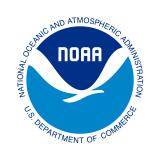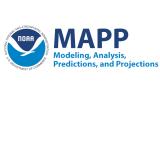Objective Monitoring and Prediction System for Drought Classification over the Continental United States

The U.S. Drought Monitor (USDM) and the seasonal and monthly U.S. Drought Outlooks (USDO) are used by water resources managers, government, and state agencies in their planning efforts, which are intended to reduce the severity of the impacts of drought to U.S. society. One major gap in the drought information system that underlies the USDM and USDO is that the suite of NOAA climate prediction models does not explicitly use the D0–D4 USDM categories. Instead, NOAA’s drought monitoring and prediction capabilities are based on the North American Land Data Assimilation System (NLDAS), which uses model-predicted soil moisture and runoff in lieu of observations (which are not available over domains as large as the continental U.S.).
While monitoring systems based on sources like NLDAS are able to detect droughts, they are challenged by classification of drought into the D0 to D4 categories in part due to uncertainties among multiple drought indicators, models, and assimilation systems. While the USDM authors use both subjective and objective information in the USDM, they have difficulty in the use of NLDAS-based objective information because it is formulated in a fundamentally different manner than the USDM classifications. For the same reason, at the time of this project there was no well-formulated method of incorporating objective forecasts of drought categories into the USDO.
This project explored an objective scheme for drawing boundaries between the D0–D4 classes used by the USDM and developed an Integrated Drought Index (IDI) to monitor drought and identified the preferred regions for drought to occur and the sea surface temperature anomalies to maintain drought. The study also discovered that the forecast skill for temperature could be improved by replacing the first 14-day CFSv2 with the medium-range forecasts.
The project team expects that the objective drought classification nowcasts and forecasts will fill a major gap in the drought information system widely used within the U.S., and will provide drought forecasters with a mechanism to issue reproducible drought forecasts. The IDI is produced daily from the NOAA Environmental Modeling Center’s NLDAS, and it is now used in the Climate Prediction Center’s monthly drought briefings.
Research Snapshot
Results of This Research
This research resulted in several peer-reviewed publications:
- Mo, K. C., and D. P. Lettenmaier. 2018. “Drought Variability and Trends over the Central United States in the Instrumental Record.” Journal of Hydrometeorology 19, 1149–1166.
- Xiao, M., B. Nijssen and D. P. Lettenmaier. 2016. “Drought in the Pacific Northwest 1920–2013.” Journal of Hydrometeorology 17, 2391–2404.
- Mo, K. C. and D. P. Lettenmaier. 2014. “Objective Drought Classification Using Multiple Land Surface Models.” Journal of Hydrometeorology 15, 990–1010.
- Mo, K. C. and D. P. Lettenmaier. 2014. “Hydrologic Prediction over the Conterminous United States Using the National Multi-Model Ensemble.” Journal of Hydrometeorology 15, 1457–1472.



